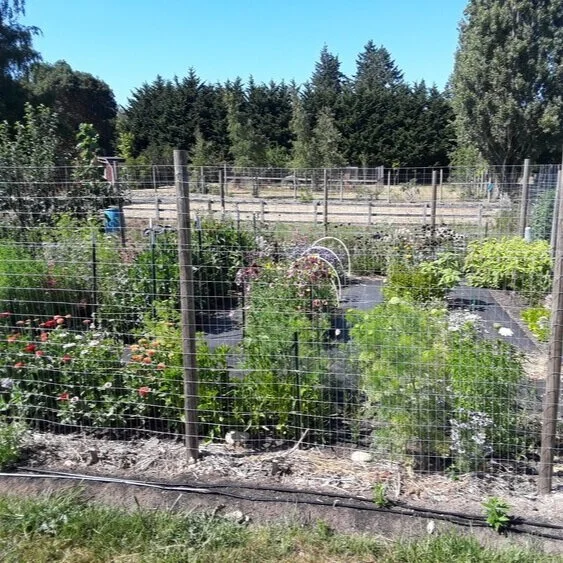Found Poem with Notes
The blog has been hibernating these last few months; but the garden, definitely not. The before and after photographs above show how the garden made use of the 1,361 hours of daylight it received between the equinox and the solstice (and the 895 hours between sunsets and sunrises –plants work at night also).
The other day, I followed the farmer around the main flower area to learn the inventory. In the list of names, I found a poem. Reading a poem aloud is like a party for the mouth and throat – I recommend you try it with this one. Humans, according to a lullaby I like, “all want to kiss our names from someone else’s mouth”. Flowers are indifferent about this, but judging from the proliferation and sometimes beauty of the names we give them, we want to kiss the names of flowers from our mouths also.
Larkspur, [1]
Cleome, Stock, Queen Anne’s Lace, [2,3]
Love in a Mist, Clarkia. [4]
Straw Flower and Salpiglossis, [5]
Bell’s of Ireland, Lady of Shalott,
Nigella Transformer, Celosia, Saponaria, [6, 7]
Black-eyed Susan.
Common Corn Cockle.
Pinks, Astor, Sweet Pea,
Phlox,
Statice, Dara, Poppies, Dahlia. [8]
Frosted Explosion, Jewels of Opar,
Dianthus, Amaranth, [9]
Bee Balm, Bee’s Friend. [10]
Notes
1. Larkspur – the farmer is proud of this one. It’s a perennial she grew from seed
2. Cleome – like most flowers, Cleome goes by a multitude of names. Here are four of them, arranged in a traditional 5-7-5 haiku:
spider flower, pink queen
Cleome hassleriana
grandfather's whiskers
3. Queen Anne’s Lace – the only name on the list that overlaps with the plant identification list I made when I was the nature area counselor at Camp Brinkley. I learned at camp that the Queen Anne Lace's flower is actually hundreds of individual flowers, an inflorescence. A compound umbel inflorescence, to be more precise.
4. Clarkia - like most of the flower names in the garden/poem, Clarkia is actually an entire genus of flowers. This one is named after the famous explorer/cartographer/slave-owner.
5. Straw Flower and Salpiglossis - on opposite ends of the humble-to-exotic name spectrum (latter comes from Greek words for "trumpet" and "tongue"), the farmer picked both out during the tour to say she was especially excited about them.
6. Celosia – a.k.a. Cock’s Comb. Many of the garden denizens require lots of nurture; some, like Celosia, just show up - "volunteers" in the gardener's parlance.
7. Saponaria – a flower with many unbecoming names, including common soapwort, crow soap, and soapweed. On the poetic side, it also goes by Wild Sweet William.
8. Dahlia - just non-descript bushes at the moment, but soon they will be the garden's scene stealers. 26 varieties this year. They will have a poem to themselves.
9. Amaranth - some of this has grown beyond bouquet dimensions. This biggest one is over six feet and have leaves wider than six inches. When its grains are ripe I will cook them with my oatmeal. One can also pop them like corn.
10. Bee’s Friend – any friend of the bees is a friend of mine.


